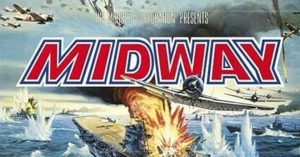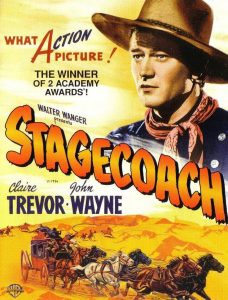 When you go to the movie theater and see on the marquee, Invasion of the Body-Snatching Vampire Werewolves, once you take your seat, you expect the film fairly soon to feature body-snatching vampire werewolves. If the film consists entirely of a romance between a California surfer boy and an old money New England girl on vacation to the Golden State, you will be disappointed, even if you love romances. Expectations are important.
When you go to the movie theater and see on the marquee, Invasion of the Body-Snatching Vampire Werewolves, once you take your seat, you expect the film fairly soon to feature body-snatching vampire werewolves. If the film consists entirely of a romance between a California surfer boy and an old money New England girl on vacation to the Golden State, you will be disappointed, even if you love romances. Expectations are important.
The title of a movie and the trailer make a promise to the audience about what that movie is going to be about. Will it be an action adventure, a romance, mystery, thriller, or a period drama? Audiences want to know and, within those genres, what type of sub-genre will it be? Is the action-adventure a buddy movie, a Western, a space opera, or a spy thriller? Promise the audience one thing and show them something else and you have a recipe for disaster.
Movies often attempt to mix genres on the theory that the resulting cinematic gem will attract both segments of the general public. Such mixes, however, usually miss achieving greatness and often lead to flops.
 Midway (1976) was a war movie focused on the decisive American naval victory over Japan in June 1942. The movie carefully details the steps leading up to the battle from the American perspective, including code breaking, repairing a damage aircraft carrier and assembling every ship and plan available. The story also includes a love story between a young American naval aviator, Matt Garth, and an interned Japanese girl, Horuko, in Hawaii. The love story never really fits into the story of the battle. The producers—or someone—appears to have realized this, at least after the film was wrapped. When the video version was released, the girlfriend subplot was dropped to emphasize the wartime action.
Midway (1976) was a war movie focused on the decisive American naval victory over Japan in June 1942. The movie carefully details the steps leading up to the battle from the American perspective, including code breaking, repairing a damage aircraft carrier and assembling every ship and plan available. The story also includes a love story between a young American naval aviator, Matt Garth, and an interned Japanese girl, Horuko, in Hawaii. The love story never really fits into the story of the battle. The producers—or someone—appears to have realized this, at least after the film was wrapped. When the video version was released, the girlfriend subplot was dropped to emphasize the wartime action.
 Some great movies do have a subplot that is from another genre. Stagecoach (1939) is a John Ford directed classic Western that includes a love story between John Wayne’s Ringo and Claire Trevor’s Dallas. The love story mixed with a Western works. Why? Compared to the love story in Midway, the love story in Stagecoach is far more subtle. Instead of taking up crucial minutes on the screen over several scenes, the love story involves only a couple of brief scenes between Wayne and Trevor. As Claire Trevor later recalled, “There was one scene I was looking forward to. It was the one where Duke [Wayne] finally says that he’d like to see me after the whole thing was over. Up to that time, Ford had set up the romance merely by looks that Duke and I had exchanged. At last I came to my chance to be romantic. When I came on the set, Ford looked at the page and a half script and said, ‘Too mushy.’ He threw everything out but two lines of dialogue. I was crushed.” In romance, less is more, especially when the love story is a sub-plot. The audience will project onto the looks between the two leading characters the growing love they are meant to see.
Some great movies do have a subplot that is from another genre. Stagecoach (1939) is a John Ford directed classic Western that includes a love story between John Wayne’s Ringo and Claire Trevor’s Dallas. The love story mixed with a Western works. Why? Compared to the love story in Midway, the love story in Stagecoach is far more subtle. Instead of taking up crucial minutes on the screen over several scenes, the love story involves only a couple of brief scenes between Wayne and Trevor. As Claire Trevor later recalled, “There was one scene I was looking forward to. It was the one where Duke [Wayne] finally says that he’d like to see me after the whole thing was over. Up to that time, Ford had set up the romance merely by looks that Duke and I had exchanged. At last I came to my chance to be romantic. When I came on the set, Ford looked at the page and a half script and said, ‘Too mushy.’ He threw everything out but two lines of dialogue. I was crushed.” In romance, less is more, especially when the love story is a sub-plot. The audience will project onto the looks between the two leading characters the growing love they are meant to see.
Books operate the same way as movies in terms of the promises made. The title of a book and the blurb on the back make promises to the reader it is best to keep. Changing the promise part way through a novel is a dangerous undertaking.
 Umberto Eco’s The Name of the Rose (1980) is a historical murder mystery set in an Italian monastery in 1327. When it became a bestseller and a 1986 movie featuring Sean Connery in the lead role, the novel was still marketed as a historical mystery. Unfortunately, many readers discovered that the book contained long theological discussions, which did not seem to fit the murder mystery part of the novel. Many such readers skipped whole sections to focus on the murder mystery, not the theological debates.
Umberto Eco’s The Name of the Rose (1980) is a historical murder mystery set in an Italian monastery in 1327. When it became a bestseller and a 1986 movie featuring Sean Connery in the lead role, the novel was still marketed as a historical mystery. Unfortunately, many readers discovered that the book contained long theological discussions, which did not seem to fit the murder mystery part of the novel. Many such readers skipped whole sections to focus on the murder mystery, not the theological debates.
 Dan Wells I am Not a Serial Killer (2009) is a good example of a novel that skirts the promise rule and, for the most part, succeeds. (The intriguing story was made into a movie in 2016). What starts out as a mystery about the identity of the killer of several people in a small Middle-American town turns into something completely different. Anyone sticking to the rules of a who-dun-it will be disappointed, since the killer is not a person. The killer is a demon harvesting body parts. The author, Wells, however, handles the transition from straight mystery to supernatural mystery in a way that smooths the change. Part of the reason the transition is easier on readers is that the novel is told from the perspective of a 15-year-old boy. With such a narrator, a supernatural explanation works better because it is somehow easier to accept the supernatural in a teenager’s world than if the story had been told from the point of view of an adult, such as the police chief or a detective, especially if the detective character was a hard-boiled, straight forward sort.
Dan Wells I am Not a Serial Killer (2009) is a good example of a novel that skirts the promise rule and, for the most part, succeeds. (The intriguing story was made into a movie in 2016). What starts out as a mystery about the identity of the killer of several people in a small Middle-American town turns into something completely different. Anyone sticking to the rules of a who-dun-it will be disappointed, since the killer is not a person. The killer is a demon harvesting body parts. The author, Wells, however, handles the transition from straight mystery to supernatural mystery in a way that smooths the change. Part of the reason the transition is easier on readers is that the novel is told from the perspective of a 15-year-old boy. With such a narrator, a supernatural explanation works better because it is somehow easier to accept the supernatural in a teenager’s world than if the story had been told from the point of view of an adult, such as the police chief or a detective, especially if the detective character was a hard-boiled, straight forward sort.
Wells also does a good job of having his teenaged narrator and his sole friend discuss the possibility of a werewolf or some other supernatural beast being behind the killing early in the novel. Although the idea is ridiculed, it at least primes the reader for what is to come, so it is not a complete surprise.
The transition in I am Not a Serial Killer is also less jarring because the supernatural explanation of a demon killer does not occur at the end of the novel. Readers, expecting a realistic, human murderer would have been extremely disappointed if the hero discovered that the killer was a demon—and then the novel ended. The reader, expecting a mystery of sorts, would have felt cheated, since there would have been no way for the reader to have figured out that the killer was a demon.
Wells takes a different approach. The hero of I am Not a Serial Killer, John Wayne Cleaver, learns the identity of the killer on page 100 of a 280-page book. Therefore, the payoff for the entire novel is not that the killer is a demon. The payoff comes throughout the remaining 180 pages as the hero devises a means to stop, and near the end finally dispatch, the demon. Although the promise of a straight mystery is not fulfilled, Wells gives hints that it is not going to be a straight mystery, and makes certain that the story has more of a payoff than the answer to the murder mystery.
When you write a novel, be consciously aware of what category it falls within, and subgenre. Also be aware of the tone and style of the story. The twists and turns that lead to the end, as well as the climax, must fit that genre and subgenre. If they do not, readers will not like it.
